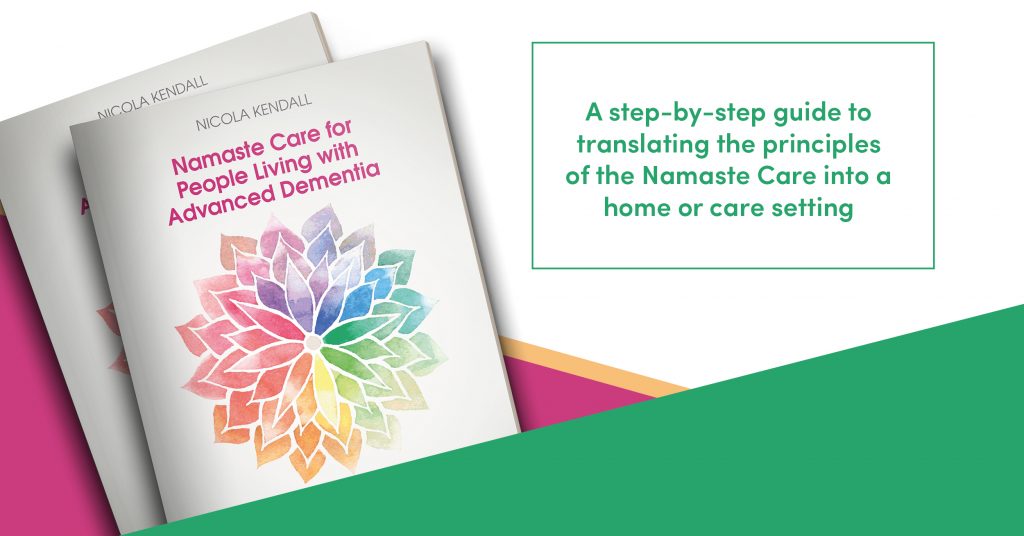 Nicola Kendall, author of Namaste Care for People Living with Advanced Dementia, discusses professional boundaries when providing health and social care services to vulnerable people. Are professional boundaries a protection or a barrier? Either way, as Nicola points out “they should not get in the way of a truly special relationship“. In her experience Namaste Care is a way to share love in an appropriate way with someone living with dementia.
Nicola Kendall, author of Namaste Care for People Living with Advanced Dementia, discusses professional boundaries when providing health and social care services to vulnerable people. Are professional boundaries a protection or a barrier? Either way, as Nicola points out “they should not get in the way of a truly special relationship“. In her experience Namaste Care is a way to share love in an appropriate way with someone living with dementia.
In my thirty plus years working in health and social care and mental health services, professional boundaries were the backbone of good practice. They were strongly reinforced throughout my training and policed in supervision and appraisal procedures.
Professional boundaries protect both the member of staff and the ‘service user’ from exploitation and abuse. They manage expectations and avoid a blurring of relationships. However, my recent work in a hospice has led me to begin to question whether ‘professional’ boundaries can be something that we hide behind and that prevent us from truly connecting with another human being.
At the Marie Curie Palliative Care conference in 2017, there was a lot of discussion about the need to enhance the informal care that exists in communities and to strengthen and support the role of volunteers and unpaid carers. There was palpable discomfort in the room among professionals at this suggestion. What about training? What about safeguarding? The professional view seemed to be that the world was full of danger.
When I started my role as Namaste Lead at St Cuthbert’s Hospice in Durham, a key task in setting up the new community-based Namaste Care Project was to recruit volunteers who would visit people living with advanced dementia in their own homes. I had a concern that maybe volunteers who would apply for the role, were not ‘suitable.’ The hospice has robust recruitment procedures in terms of police checks, references and volunteer interviews which ensured safety, but would the people who wanted to take on the role be the ‘right’ kind of people?
I need not have worried. The project has attracted a diverse group of volunteers, but their common denominator is that they all have the heart for the role. They are kind, compassionate, patient and wise, every last one of them. All of them have gone above and beyond what was expected of them. One volunteer takes homemade soup around to the family he visits on days he isn’t due to visit. Another has been to the library and sourced books on subjects the person with dementia would be interested in. Cakes have been baked. Additional visits have taken place when the person living with dementia’s health declines. One wonderfully feisty Glaswegian lady died clutching the Scottish flag that her Namaste Care volunteer had given her. True examples of compassionate communities in action.
Northumbria University undertook a realist evaluation of the project using volunteer focus groups and carer interviews to gather their data. The key component that appeared to provide the explanation for the success of the Namaste Care intervention in a person’s home, was the deep, emotional connection and friendship that develops between the volunteer and the person they visit. This often extends to the main carer as well, who is usually a spouse.
How much that relationship means to the family is demonstrated time and time again when we attend the funerals of the people we have visited and the volunteer is spoken about in the eulogy as an important part of that person’s final years or months.
My experience of the project has been that I have become much more relaxed about the idea of boundaries. I think that we should talk about ‘appropriate’ boundaries rather than ‘professional’ boundaries. Of course, there needs to be clear expectations and safety, but the phrase ‘professional boundaries’ now jars with me. It says ‘I’m a professional’ and you are a ‘service user’, ‘patient,’ ‘client’ or some other label. It separates us, at a time when the person living with dementia needs closeness and reassurance. An example of this is the subject of hugging. It was an absolute no-no when I worked for social services. In reality, some people love to hug, some people would prefer a hand-shake or a pat of the arm, some people prefer distance. In respecting who that person is and what would reassure them, if they reach out for a hug, what should we do in response?
The gentle, sensory approach of Namaste Care invites mutuality and equality- a ‘doing with’ rather than a ‘doing to.’ This is beautifully demonstrated by the number of times the volunteer giving the person with dementia a hand massage has had one from them in return. Indeed my firm belief is that Namaste Care is a way to share love with someone living with dementia in an appropriate way, and while boundaries are established at the beginning of our visits and expectations are managed, they should not get in the way of a truly special relationship.
If you would like to read more about what we have learned from establishing our Namaste Care project at the hospice I have written a book as a guide. Namaste Care for People Living with Advanced Dementia: A Practical Guide for Carers and Professionals is available from Jessica Kingsley Publishers
Nicola Kendall is a qualified psychotherapist, complementary therapist and mindfulness teacher, as well as the Namaste Lead at St Cuthbert’s Hospice, Durham. She is responsible for setting up a community project involving trained volunteers delivering Namaste Care to people living with advanced dementia at home.